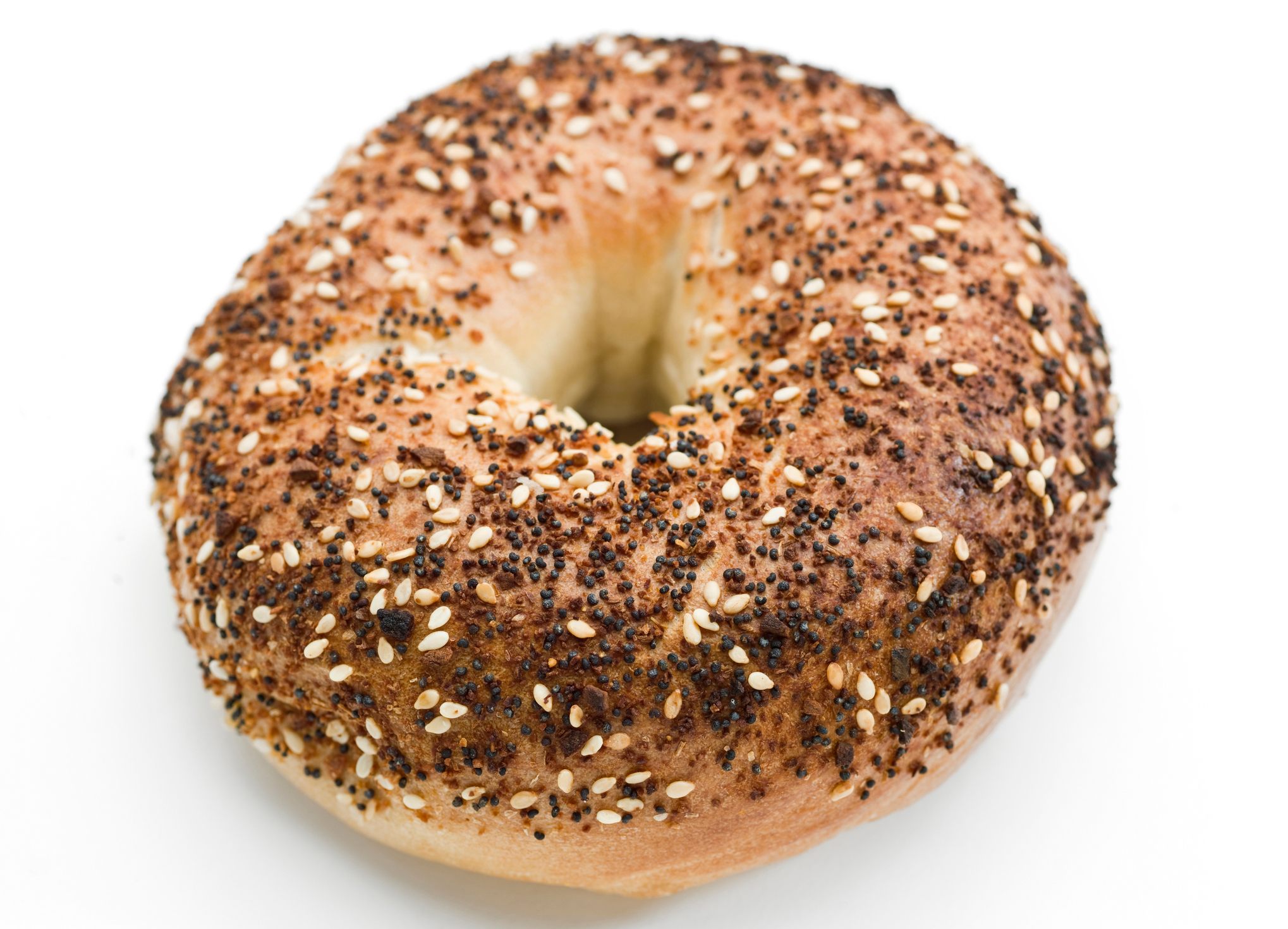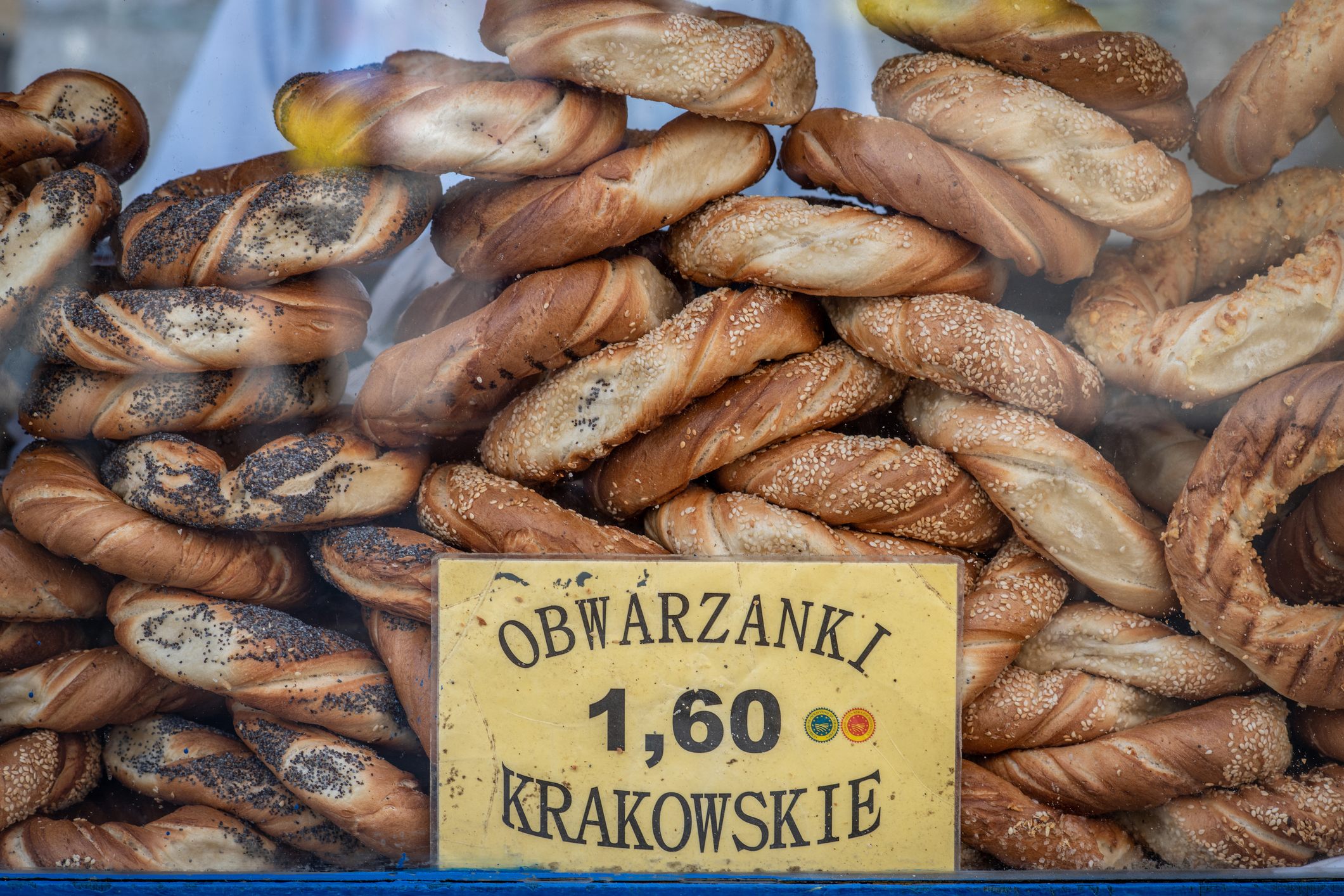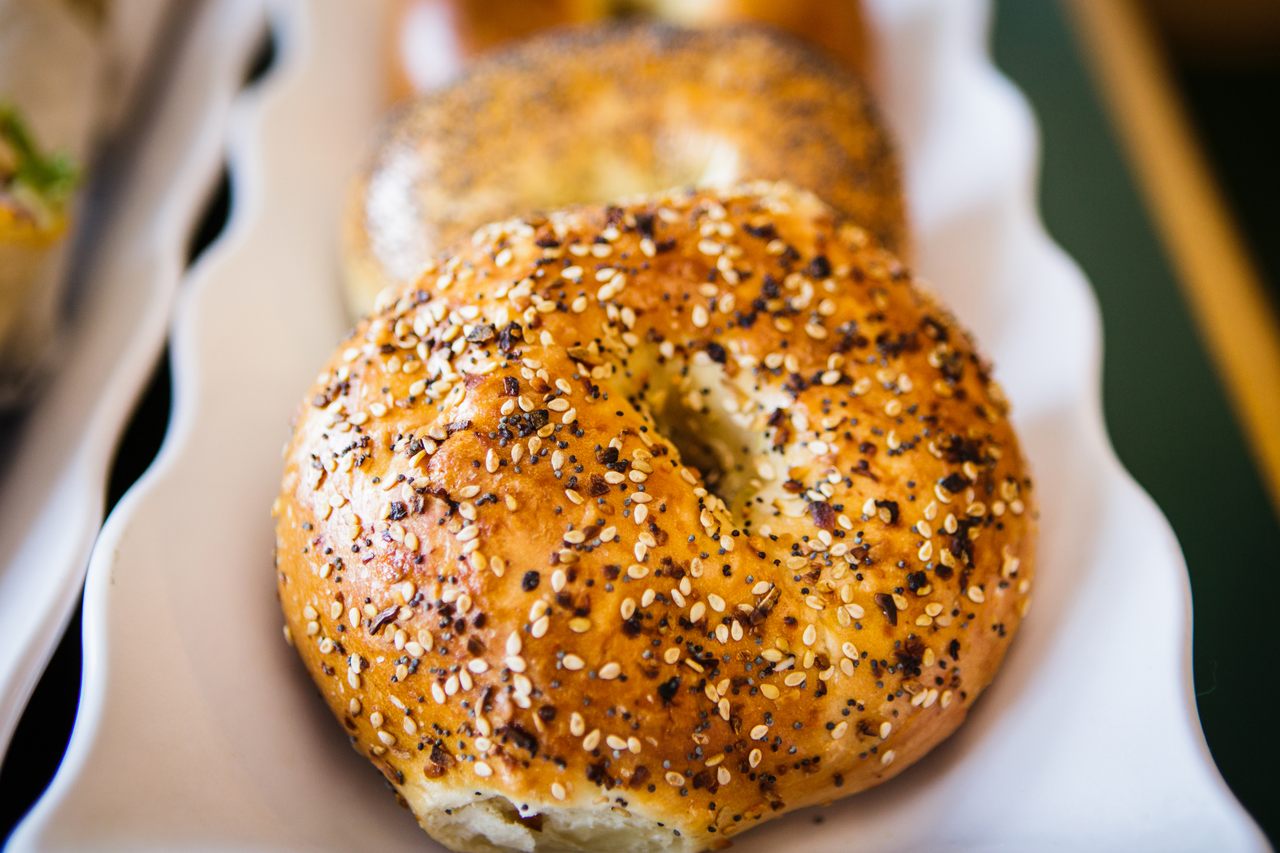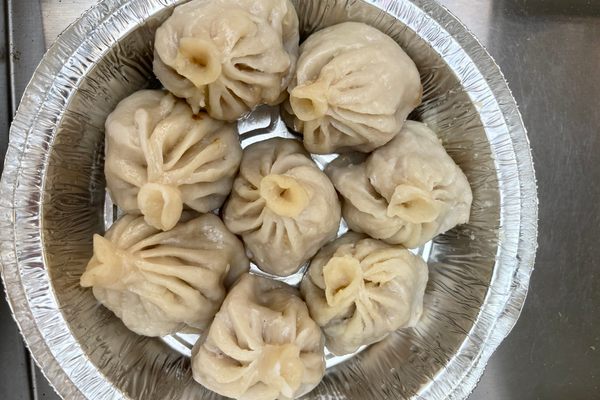Everything You Need to Know About the True Origins of the Everything Bagel
There’s a lot of history in every bite.
The everything bagel is the king of bagels. On this there should be no argument. In the same way that it combines all of the key bagel toppings—sesame and poppy seeds, dried garlic and onion, and coarse salt—it’s also a combination of ancient traditions and new fads, Eastern ingredients and Western techniques. With cream cheese and lox, it creates, more or less, the perfect bite.
There are, however, arguments about who invented the everything bagel, and none of them are particularly compelling. Several New Yorkers have staked their claims as its inventor, including restaurateur Joe Bastianich, but their claims are more like how my mother-in-law half-jokingly claims that she created the concept for the Pixar movie Cars. (“What if the cars in the parking lot came to life and could talk?”)
Let’s be honest, it’s probably not possible to have “invented” the concept of putting several different existing bagel toppings on a bagel. In patent law there is something called the rule of “obviousness,” a tricky concept, but one that’s both necessary and necessarily subjective. It states that something cannot be patented if a person with ordinary skill in a subject would naturally use the same idea to solve a problem. A painter, for example, cannot patent a jar of water for cleaning brushes, because any painter, understanding that water is used to clean brushes and that a jar is a good vessel to hold water, would come to the same conclusion. Or, for example, if there are five popular bagel toppings, it is fairly obvious to make a bagel with all of those ingredients. That’s not invention.

But there is one element of the everything bagel that is invention, and that’s the name. “Everything” is the accepted name for a fairly specific combination of toppings: It is not a “combo bagel” or a “spice-lover’s bagel” or, as the Canadians might call it, an “all-dressed bagel.” It is an everything bagel, and someone had to come up with that piece of clear, descriptive branding.
By his own and most other accounts, that person was David Gussin. Around 1979 or 1980, he says, he was a teenager working at Charlie’s Bagels in the Howard Beach neighborhood of Queens, New York. “It didn’t actually say ‘Charlie’s Bagels,’ it just said ‘Bagels,’ but it was Charlie’s,” says Gussin. He was doing typical teenage job stuff: cleaning, working the counter—and cleaning the oven, where excess bagel toppings accumulated when they fell off. “One day instead of throwing them out like I usually did, I gave them to Charlie and said, ‘Hey, make a bagel with these, we’ll call it the everything bagel.’ It wasn’t that big of a deal; we weren’t looking to make the next big bagel. Charlie was probably more interested in what horses he was going to bet on.”
Charlie tried Gussin’s idea. At first, it was a limited-edition offering, made only with the toppings that fell off in the oven. It cost, Gussin remembers, five cents more than the other bagels. Soon, a shop across the street started selling their own everything bagels, and word slowly spread. The first mention I can find of the everything bagel is in a New York Times food column from 1988, and at that time the concept was new or niche or local enough that the writer felt it necessary to place “everything bagel” in quotes and define it.
“It’s all in the name,” says Gussin. “Just because someone put two burgers on a bun doesn’t mean they invented the Big Mac.”
But there’s more to this story. What exactly is an everything bagel? And more importantly, why did it catch on?
In 2009, I moved to San Francisco after spending my entire life in the Northeast. At the coffee shop in my new neighborhood, I ordered an everything bagel. It came with sunflower seeds on it. I was offended—not because I don’t like sunflower seeds, but because for me, for Gussin, and for millions of New Yorkers and Northeasterners, an everything bagel is clearly defined. It’s neither literal nor open to interpretation. It’s specific. In fact, Gussin says that burning the seeds is key. In his creation, the toppings are baked twice, once while falling off a single-topping bagel and again together. The bitterness of the burnt onion and garlic, especially, are key to balancing out the fattiness of cream cheese and lox. But why would there be—for me or anyone else—so much angst over what was on that bagel? It is, after all, a very recent culinary tradition, barely 40 years old, with a slow rise to prominence. There probably wasn’t a single everything bagel in San Francisco until the 1990s. It is, like a boiled but not yet baked bagel, mostly formed, but still soft and new enough to be pliable. At least in theory.
People have strong feelings about the right and wrong ways to prepare and consume certain foods, particularly beloved or traditional ones. This is a worldwide phenomenon. Foods are visceral and evocative, and tied into our national, cultural, ethnic, and religious identities. But why have these ingredients, at this time, been so specifically merged to become the most recognizable emblem of Jewish cuisine? What is it that is happening when sesame and poppy seeds, the burnt onion and garlic, and the vital but often overlooked chunks of salt all come together?

There are two aspects of a bagel, from two branches of the breadmaking evolutionary tree. The first is that it is a ring-shaped bread. The second is in its preparation, in which it is first boiled and then baked.
There are many very old ring-shaped breads, and they are found primarily in two regions: the Middle East and Eastern Europe. Many are sweet, like the Turkish simit, which is dipped in molasses. But a surprising number follow a direct line to the bagel: savory, ring-shaped, both boiled and baked. The ring shape provides a higher surface-to-interior ratio than a standard roll, which is important for boiled breads, because they’re so much more dense than non-boiled breads. Try to bake a standard loaf or bun shape out of boiled dough and you’ll end up with a bread that’s raw in the middle. You can solve that conundrum by simply removing the middle.
These bagel-like breads are common, all over Eastern Europe especially. There’s the covrig from Romania, the bublik from Ukraine, and the obwarzanek krakowski from Poland. The pretzel, which is ancient and may come from Germany, France, or who-knows-where, is a cousin (that involves getting dipped in a lye solution to make that crisp brown crust).

Many sources, including journalist Maria Balinska (who literally wrote the book on bagels), place the bagel’s immediate ancestor as the Polish obwarzanek krakowski, partly because it was also in Poland that the first known mention of the “bagel,” in the early 17th century, was documented. The bagel spread with the Jewish diaspora and landed in New York, Toronto, London, and elsewhere. In New York, bagels first gained widespread attention thanks to the sometimes vicious bagel strikes of the 1940s and 1950s.
But bagels remained a local thing. It wasn’t until the 1960s that the bagel went national, thanks to a few innovations: machine-rolling, freezing, and pre-slicing. The Lender’s bagel combined all three of those processing conveniences and blew up the entire bagel industry. Suddenly the entire country was awash in bagels—and not particularly good ones. Suddenly the door was open for bagel creativity—you might say that that creativity would be critical for bagel shops to distinguish themselves—and it was in this context that the everything bagel arose.
Gussin says that when he created the everything bagel, he was indeed using everything, the only toppings bagel-makers of the time had on hand. Onion, garlic, and salt have a long, wide history with bread in a range of forms and uses, but sesame and poppy seeds are different.
Sesame is one of the oldest cultivated crops in the world, having been domesticated at least 5,000 years ago in India. It’s a tough little plant that thrives in desert conditions and needs very little care. At least 4,000 years ago it was traded across the region and became a fundamental part of a range of cuisines. It also moved east along the Silk Road to China, Korea, and Japan. Pretty much everyone who encountered sesame loved it and wanted more.

Sesame probably made it to the ancestral home of the bagel after the Romans conquered Egypt in A.D. 30, as there are records of sprinkling sesame seeds on bread in Sicily in the first century, and through some means of migration, dispersal, or trade, made its way north, to Eastern Europe. Almost every single other bread in the bagel family, including obwarzanek krakowski, uses sesame as a topping.
Poppy seeds may be even older than sesame seeds, though given the narcotic effect of the plant and their relative inefficiency for producing oil, they’re not quite as prominent in the historical record. They, too, were traded along the Silk Road, probably originating from Lower Mesopotamia, but they never took a strong hold in Western Europe or Asia.
Poppy seed breads are not nearly so global and ubiquitous in world cuisine as sesame seed–topped breads—in fact, they’re pretty much limited to Central and Eastern Europe. There is makowiec (a rugelach-like rolled pastry with poppy seed paste, from Poland), strudel (Germany), hamantashen (Eastern European Jewish triangular cookies, sometimes filled with poppy seed paste), and prekmurska gibanica (celebratory poppy seed layer cake from Slovenia), among others. Most are sweet, but there are savory ones, too. The list might be familiar by now: bublik, obwarzanek krakowski, and the bagel: boiled and baked ring-shaped breads.
These particular toppings ended up in bagel shops, and eventually on the everything bagel because the bagel’s ancestor had used those toppings for thousands of years. They matured and migrated with the bagel. There are New World spices that would and sometimes do taste pretty good on a bagel: chili pepper, allspice, even bitter chocolate, who knows? But allspice and bagels don’t have millennia of history. Rather, bakers will use what feels right, what tastes right, and that’s what’s been used before. So who invented the everything bagel? An entire culinary tradition spanning continents and thousands of years. That, and David Gussin, since no one called it an everything bagel before he did. Probably.
Gastro Obscura covers the world’s most wondrous food and drink.
Sign up for our regular newsletter.




























Follow us on Twitter to get the latest on the world's hidden wonders.
Like us on Facebook to get the latest on the world's hidden wonders.
Follow us on Twitter Like us on Facebook